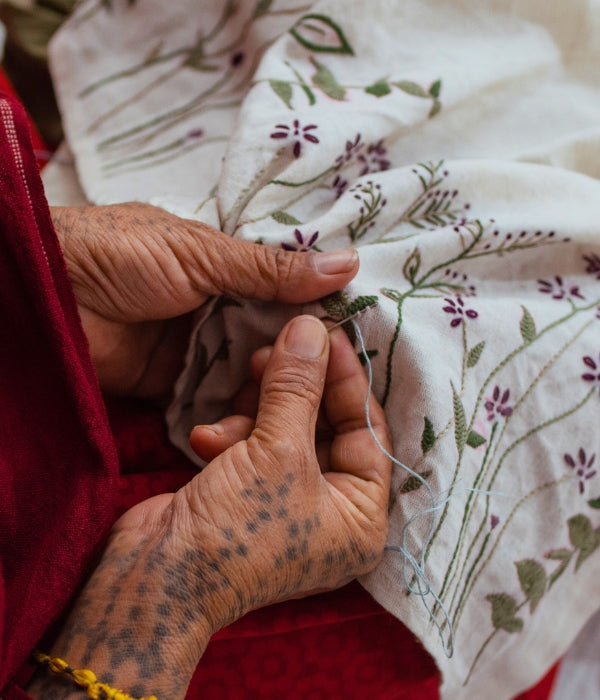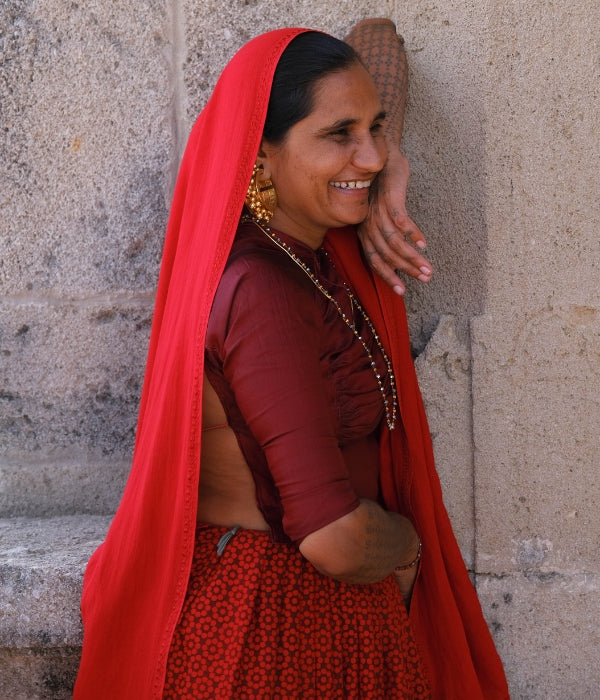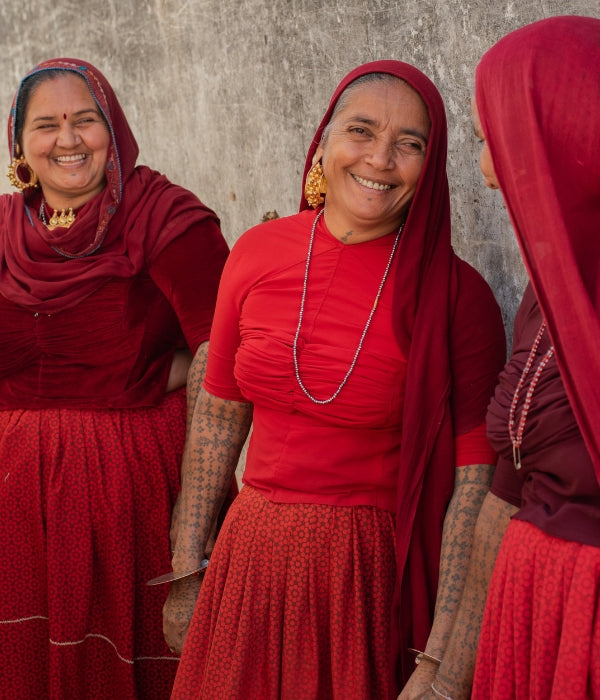The Okhai Story

The Indian Ecosystem of Handmade Crafts
Okhai has become one of the first and largest e-commerce platforms exclusively selling contemporary, genuine and authentic, hundred percent handcrafted fashion and lifestyle products made by artisan communities from across the country to customers across the world.
Our handmade products are sustainably crafted, rooted in Indian heritage that celebrates traditions and artistic nature. What started with a small group of artisans from Gujarat is today rejoicing in its growth of 30,000 artisans, who directly benefit through Okhai. We recognise our rich history and cherish the legacy of master crafters that have transformed the future of rural artisans. This design transformation has led to an approach where the artisans, designers and marketers together develop collections ensuring not just the economic but artistic growth of the artisans.
And our journey has just started as we continue to work on our plans to modernise and revive handcrafted lifestyle products.

Economic Development
Our artisans earn upwards of Rs 20,000 every month depending on the hours they work at home or at the centre, their skill level and design difficulty. We try to ensure that our women artisans can work at their own pace in their homes while managing their household. Over 470 families are benefitting from the rise in their income levels improving the economic condition of 3200 people directly with the average family size in Okhamandal being 7 to 8 members. Our plan is to reach over 5,000 women in a span of five years, leading to a potential impact on the lives of 8,000-10,000 people.

About TCSRD
Since its inception, Tata Chemicals Society for Rural Development (TCSRD) has played a pioneering role in promoting the Saurashtra handicrafts at Mithapur, Karjobi at Babrala and jute craft at Haldia under one brand "OKHAI". Back in the 1990s, The Okhamandal Region of Gujarat was plagued by a devastating drought resulting in its tribal community facing harsh conditions leading to the decline of their sole source of income: agriculture.
The adverse conditions brought Ramiben, a local craftswoman from the area’s Arambhada village, to take charge and initiate a solution to help support the families affected by it. A skilled appliqué artisan herself, Ramiben, mobilised forces and with the help of corporate support, led the set-up of Okhai - a contemporary fashion and lifestyle label, socially driven and committed to building and empowering the women and communities around her.
With the assistance of self-help groups (SHGs) and training in design and modern handicraft production, Okhai has now become a ray of light for these women. As an organisation (TCSRD) the aim has always been to create, develop and build a brand.
